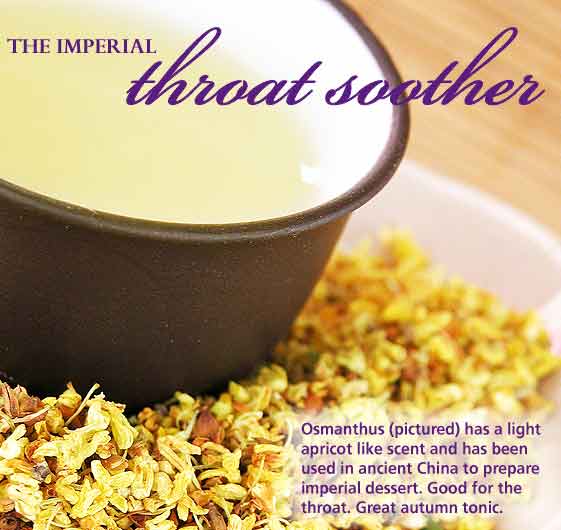Easy guide to Osmanthus (tea & food)
Posted by PETER - TEAS.COM.AU

Once upon a time in ancient China a poet named Wang Jian (AD 768-835) during Mid-Autumn festival mused...
“As a black bird perching on the tree, moonlight paints the courtyard pale white,And the cold dew quietly moistens the osmanthus flower;Everyone watches the bright moon hanging in the sky tonight,But no one knows the autumn thoughts will pass through whose mind."
...while drinking osmanthus scented oolong tea and gazing up at the moon, in honour of Chang'e 嫦娥, the Chinese Goddess of the Moon.
For many people who are aware of the osmanthus tree, know it as a fragrant flowering tea that produces tiny little yellowish flowers with a sweet fragrance used to enhance one's pleasurable delights in a flowering garden.
But how many are aware that it can be used in tea and cooking?
Here is a list of the 7 most commonly asked questions regarding it's usage in food and drink.
What does osmanthus tea smell and taste like?
Osmanthus herbal tea has been described as having a delicate fruity-floral apricot aroma, while having a taste ranging from bittersweet to sweet-sour.
What is osmanthus used for?
In Chinese cuisine, osmanthus is used as a fragrant aromatic in Chinese dessert such as Tong Yuan and as a light accent with Chinese oolong tea.
Can osmanthus flower be eaten?
Yes. While there are many ornamental varieties, it is the flower from the flowering plant Osmanthus Frangrans that is used in cooking.
Does osmanthus contain caffeine?
No. Osmanthus is caffeine-free.
What does osmanthus mean?
Osmanthus is a compound word coming from the Greek "osma" meaning fragrant and "anthos" meaning flower. It is the botanical translation of its Chinese name.
What is the Chinese name for osmanthus?
The Chinese name for osmanthus is 桂花 (gwai-fa in Cantonese and guìhuā in Mandarin).
Is osmanthus tea good for you?
In traditional Chinese medicine osmanthus is a well-known herb used to improve skin, detoxify the body, reduce thick saliva in the throat and boost lung health.
How to best use osmanthus?
Osmanthus is very strong, so it best to use it sparingly to avoid giving your tea and desserts a bitter-sour aftertaste. Ideally in a pot of tea, just a pinch can be enough to impart the desired aromatic pleasantries. When osmanthus is being used in cooking, never use boiling water. Allow the broth to cool and then use at the end before serving. Sometimes osmanthus is used as a fragrant garnish.
Try our Osmanthus Oolong today!
SHARE:

AUSTRALIA'S FINEST LOOSE LEAF TEAS
Explore Australia's largest selection of Premium Teas & All-Natural Organic Herbal Blends.


